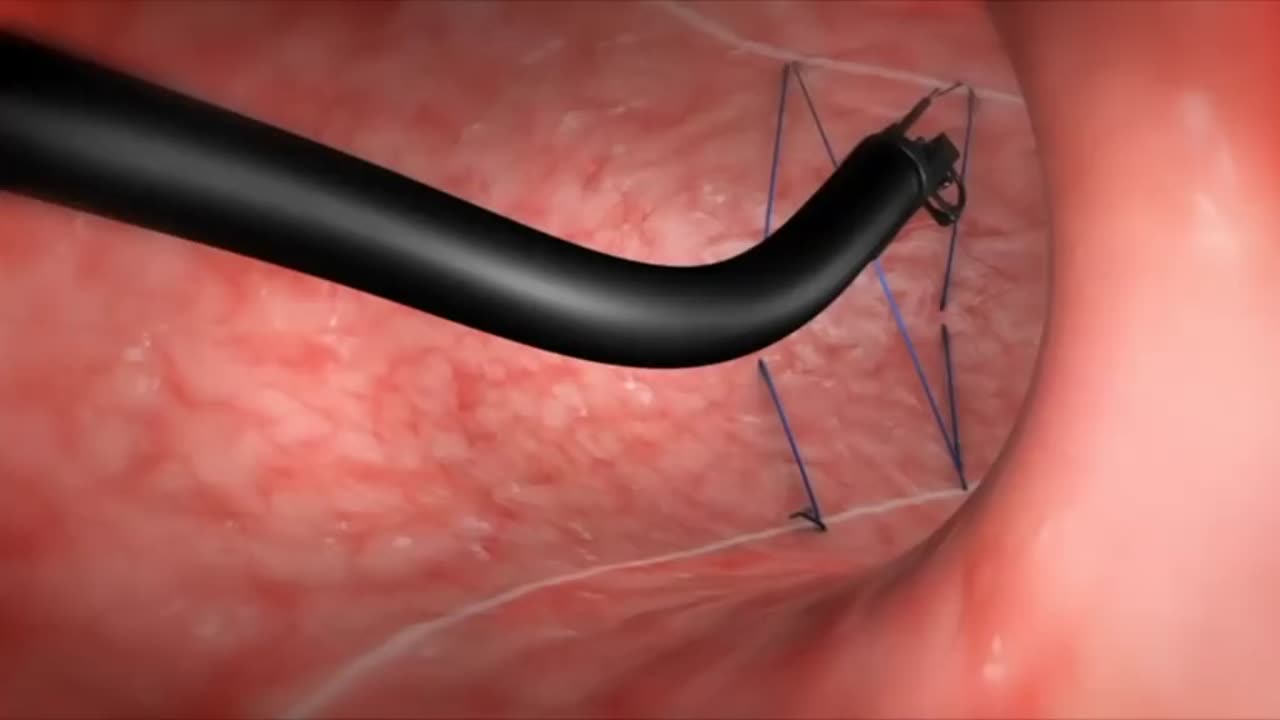Premium Only Content

"Exploring the Effectiveness and Safety of Endoscopic Sleeve Gastroplasty: A Comprehensive Review"
Endoscopic Sleeve Gastroplasty (ESG) is a minimally invasive weight loss procedure that involves the following steps:
1. **Preparation:** Before the procedure, patients undergo a thorough evaluation, including medical history, physical examination, and sometimes diagnostic tests.
2. **Anesthesia:** The patient is given anesthesia to ensure comfort and minimize discomfort during the procedure.
3. **Endoscopy:** A thin, flexible tube with a camera (endoscope) is inserted through the mouth and into the stomach. This allows the medical team to visualize the stomach lining and perform the procedure without making any incisions.
4. **Suturing:** Using specialized instruments passed through the endoscope, the doctor places sutures in the stomach to create a series of folds. These sutures effectively reduce the size of the stomach, restricting its capacity to hold food.
5. **Formation of Sleeve:** The sutures create a sleeve-like structure along the greater curvature of the stomach, resembling the shape of a traditional sleeve gastrectomy. This smaller stomach size helps control food intake and induces weight loss.
6. **Closure:** Once the sutures are in place, they are tightened to secure the folds and create the desired sleeve shape. This narrows the stomach, leading to earlier feelings of fullness and reduced food consumption.
7. **Completion:** After the procedure is completed, the endoscope is removed. ESG is usually performed as an outpatient procedure, meaning patients can often return home the same day after a period of observation.
8. **Recovery and Follow-up:** Patients typically experience a relatively short recovery time and are advised to follow a specific diet plan and lifestyle changes to optimize the results of the procedure. Regular follow-up appointments are scheduled to monitor progress and address any concerns.
It's important to note that ESG is a complex procedure that requires expertise and specialized equipment. Patients considering this procedure should consult with a qualified medical professional to determine if it's the right option for them and to receive personalized guidance throughout the process.
-
 20:58
20:58
GritsGG
1 day agoProtect the President Challenge on Warzone!
7.46K -
 1:49:07
1:49:07
The Michelle Moore Show
2 days ago'Biden's Immigration Mess, President's Trump Spiritual Cry For Help, English Speaking Truckers Only, Woke CEO's Killing of Conservative Brands, Palantir's Kill Chain' Mark Taylor: The Michelle Moore Show (Aug 25, 2025)
29.9K91 -
 LIVE
LIVE
Lofi Girl
2 years agoSynthwave Radio 🌌 - beats to chill/game to
171 watching -
 2:14:18
2:14:18
The Pascal Show
13 hours ago $0.40 earnedTHEY LIED TO POLICE AGAIN? Jake & Rebecca Haro Have Lost Their Minds! Emmanuel Haro Search Continues
4.66K -
 1:25:52
1:25:52
TruthStream with Joe and Scott
2 days agoSG Sits Down w/ LT From "And We Know": An 80K FT View of Humanity's Great Awakening from 8/22/2025
15.8K16 -
 15:54
15:54
Lacey Mae ASMR
11 hours ago $0.68 earnedASMR For Sleep in 15 Minutes!
9.13K7 -
 3:16:38
3:16:38
Price of Reason
12 hours agoTrump FIRES Fed Governor Lisa Cook! Cracker Barrel CRISIS Continues! James Gunn DCU Woes! Gamescon!
111K8 -
 2:25:01
2:25:01
FreshandFit
7 hours agoTyreek Hill Pays Ex Wife $1 Million in Ongoing Fees From Divorce?!
34K3 -
 2:03:46
2:03:46
Inverted World Live
9 hours agoHaunted Dolls Hack Amazon Alexa | Ep. 98
106K2 -
 3:09:53
3:09:53
Laura Loomer
9 hours agoEP140: Loomer EXPOSES Islamification At US State Department
35.7K12